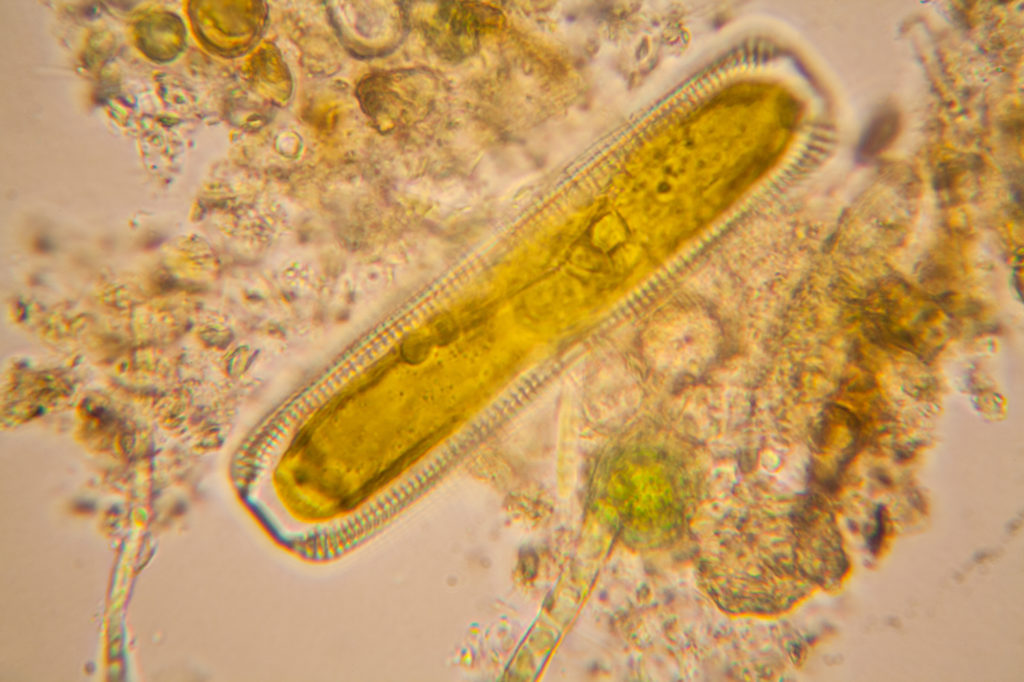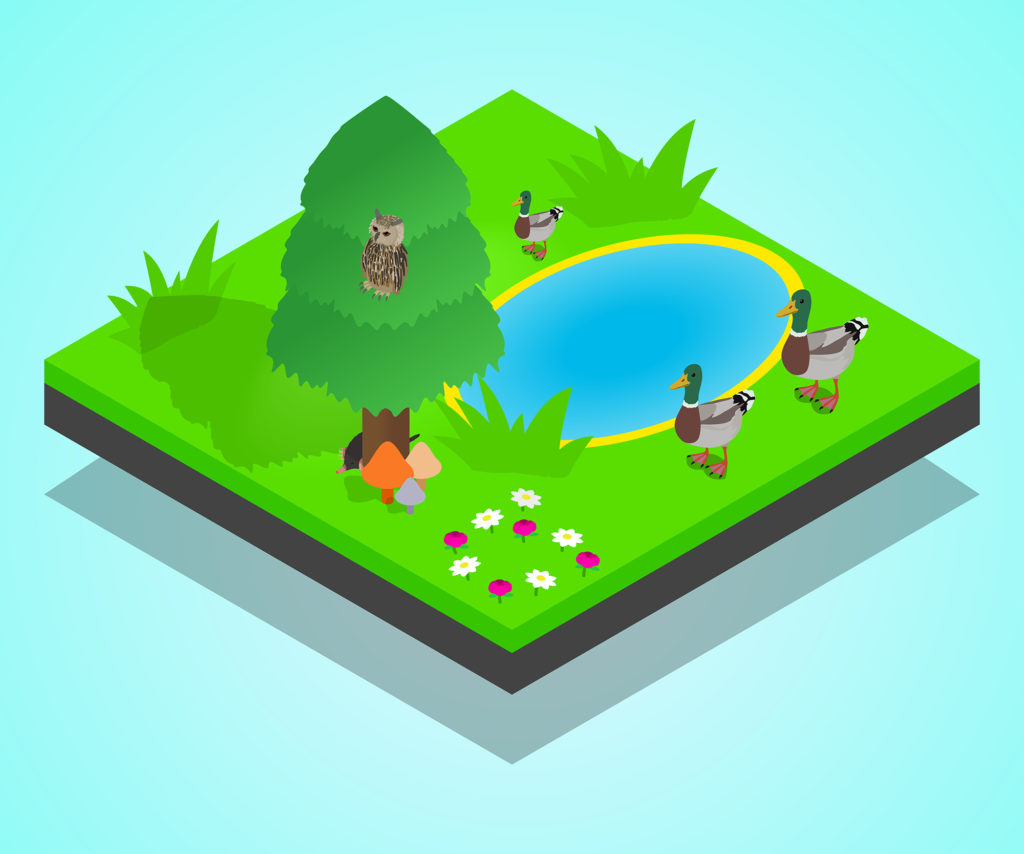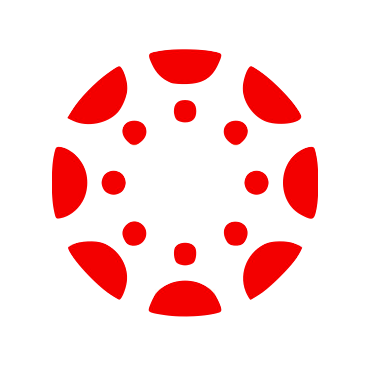Pond Life Laboratory & Media Piece


Pond Life Objective:
Identify microscopic and macroscopic pond producers, consumers, and decomposers, incorporating them into a pond food web.
Many of the organisms in ponds are similar to lake organisms, including the primary producers.
Background Context
For this guide’s media piece you will be identifying organisms from a small pond. To complete this successfully, we will start by introducing common categories of pond organisms and then introduce the assignment.
This video introduces some of the consumers and producers, both microscopic and macroscopic, that we may encounter in a pond sample.
Freshwater Producers (Introduced on the Lakes webpage)

Eutrophic lakes and small ponds are typically very productive, meaning there are many producers, including algae and plants. Producers carry out the process of photosynthesis.
These are common microscopic producers that you are likely to find in a lake or pond.

Cyanobacteria

Algae

Diatoms

Euglena
These are larger producers; plants with strategies for obtaining sunlight.

Elodea

Azolla

Water Lily
Freshwater Consumers (New material)
Here are a few examples of common microscopic lake and pond consumers.

Paramecium

Amoeba

Rotifers

Copepods
This video shows models of two of the best known microscopic consumers.
These are a few commonly observed macroscopic (but still small) consumers.

Daphnia

Hydra

Nematodes

Planaria

A food web would not be complete without decomposers. In aquatic ecosystems, bacteria are the primary decomposers.
In the middle of this photo is a single photosynthetic diatom. The smaller brownish material around it may be bacteria, they are more difficult to identify.
Sunlight energy continually enters a pond wood web, and is converted by photosynthetic producers into energy-rich sugars. Organisms convert that sugar energy into heat that is lost from the system.
Decomposers enable nutrients from dead organisms to re-enter the food web’s producers, cycling repeatedly over time.

Media Piece Assignment
Pond Life
Sketch and label the food web for the pond organisms you have observed. Include the following in your labeled sketch:
- examples of producers you have observed (microscopic and macroscopic)
- examples of consumers you have observed (microscopic and macroscopic)
- decomposers (may have to make these up; they are hard to observe)
- arrows for energy flow (including sun and heat)
- arrows for nutrient cycling

You are turning in your handmade (either on paper or digitally produced) pond food web that contains all of the required sketched and labeled components. You can be creative as long as you include the required elements.
It may help to review food webs here.
Work Ahead
Now we will be linking the types of pond organisms to a real sample that will also be the basis for this guide’s media piece.
This is a pond Mark dug out about 20 years ago. It has slowly filled in with organisms and each year we find new organisms that have arrived by wind and bird.
This sample comes alive under the microscope. Check out how amazing the settled sample is, about 2:00 minutes into the video.
Here is an additional video with a very cool consumer that you can also use for your media piece.

